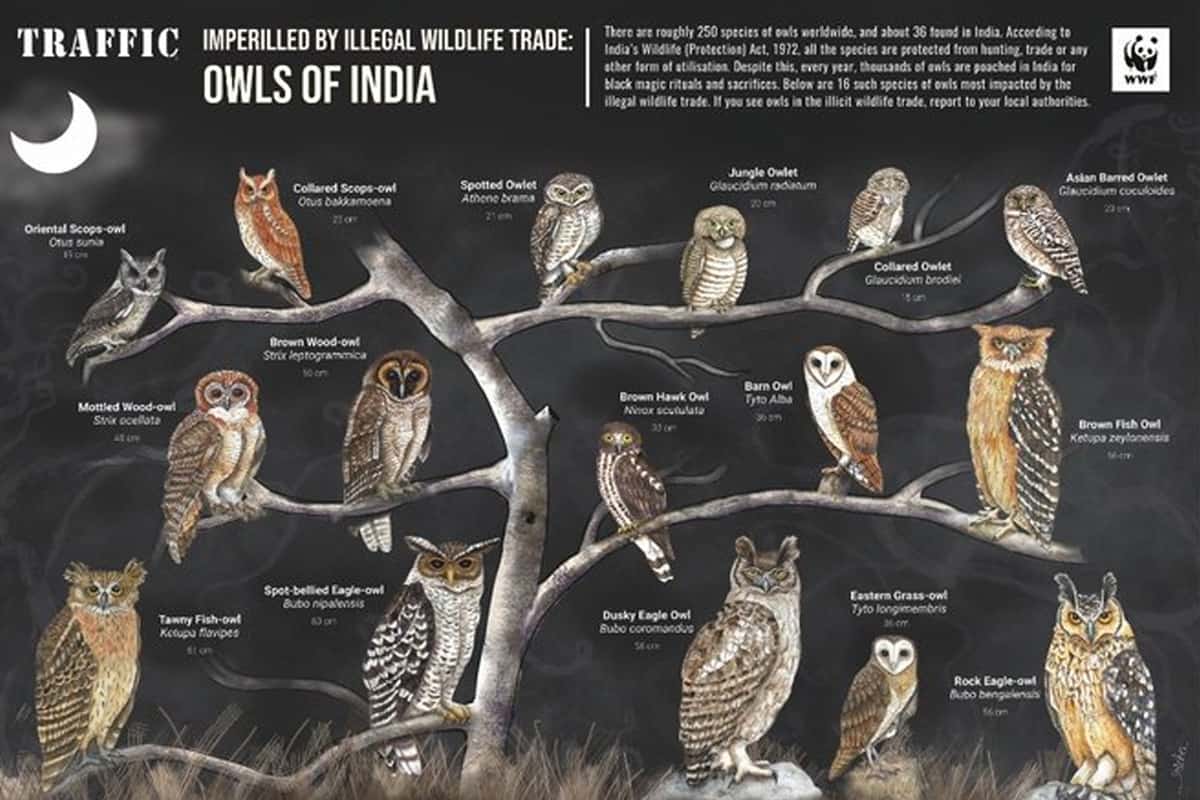
By Satyen Mohapatra
It’s a sad irony that come Diwali and while Goddess Laxmi is widely worshipped and the faithful believe that Goddess Laxmi (Goddess of Wealth) enters their house on the day of Diwali, her vehicle the Owl is sacrificed in thousands that day due to occult practices. Age-old myths and superstitions surrounding owl sacrifice lead to a virtual drop in the owl population of the country.
It is a tantric belief that on the day of Diwali when Goddess Laxmi showering wealth and bounty comes to your house, if her vehicle the owl itself is killed, she will not be able to leave and the wealth and prosperity will remain with you.
It is also believed that the body part of an owl is claimed to give you the power of “vashikaran” (controlling someone).
These nocturnal birds of prey play an extremely crucial role as scavengers to keep balance in today’s fragile ecosystem by feeding on rodents, reptiles, insects, birds, amphibians.
Traditional healers and witch doctors are responsible for creating a demand for different body parts of owl as an effective cure for all kinds of ills and problems leading to a large number of owls being trapped and sold in the illegal wild bird market.
Out of the approximately 250 owl species found worldwide about 36 are found in India.
Domestic trade is very profitable and for many tribal communities, owl trapping is a means of making a living.
The law is quite strict and any person who contravenes any provision of the Wildlife Protection Act is liable to imprisonment for up to seven years and also a fine upto Rs 25,000.
However, apart from there being reduction due to strict penalties, the trade has not stopped.
Owl trade is mostly in UP, MP, AP, West Bengal, Delhi, Gujarat, Rajasthan and Bihar with the most popular species being Rock Eagle-owl, Brown Fish owl, Dusky Eagle owl, Collared Scops owl, Mottled Wood owl.
Spotted owl one of the most widespread owl species in India is used by taxidermists as biological specimen for use in zoology classes. The species is eaten by Baheliya, Gonds, Mundas.
Barn owls are caught because their eyeballs, skin and feather roots are used for preparing medicines by traditional healers for all kinds of ailments but without any scientific basis. The consumers are mostly found in West Bengal, Assam, Odisha, Tripura.
In illegal bird markets in Bihar, UP, Jharkhand, Andhra Pradesh, Haryana, Gujarat, Maharashtra, West Bengal, Odisha, Karnataka, Tamil Nadu, Chhatisgarh, Rajasthan nearly 20,000 to 50,000 birds including owls are traded.
A large number of owls are exported worldwide via Nepal and Bangladesh.
TRAFFIC, India, the organisation involved in wildlife trade monitoring to see that it does not threaten the conservation of nature, has recently identified 16 species of owls that are commonly trafficked in the illegal wildlife trade and along with WWF-India have created an informative poster, ‘Imperilled by illegal wildlife trade: Owls of India’.
According to Dr Saket Badola, Head of TRAFFIC’s India Office, ‘The poaching and trafficking of owls in India have become a lucrative illicit trade resting on the wings of superstition. Out of the approximately 250 owl species found worldwide about 36 are found in India’.
All owl species in India are protected under the Wildlife (Protection) Act, 1972, making poaching, trade, or any other form of exploitation a punishable offence. They are also listed in Appendix II of CITES, thus tightly regulating their international trade. Despite the legal restrictions, every year, thousands of birds are sacrificed for superstitious taboos and mystic rituals and practices.
TRAFFIC India has issued an ‘Advisory’ to enforcement agencies calling for increased efforts to help curb illegal trade in owls.
“As the practice of owl sacrificing begins with the start of the Dussehra festival, moving onto Diwali, poachers involved within the bird trade are most active during this season. This is one of the most important times for enforcement agencies to remain alert and increase their vigilance,” Dr Badola adds.



